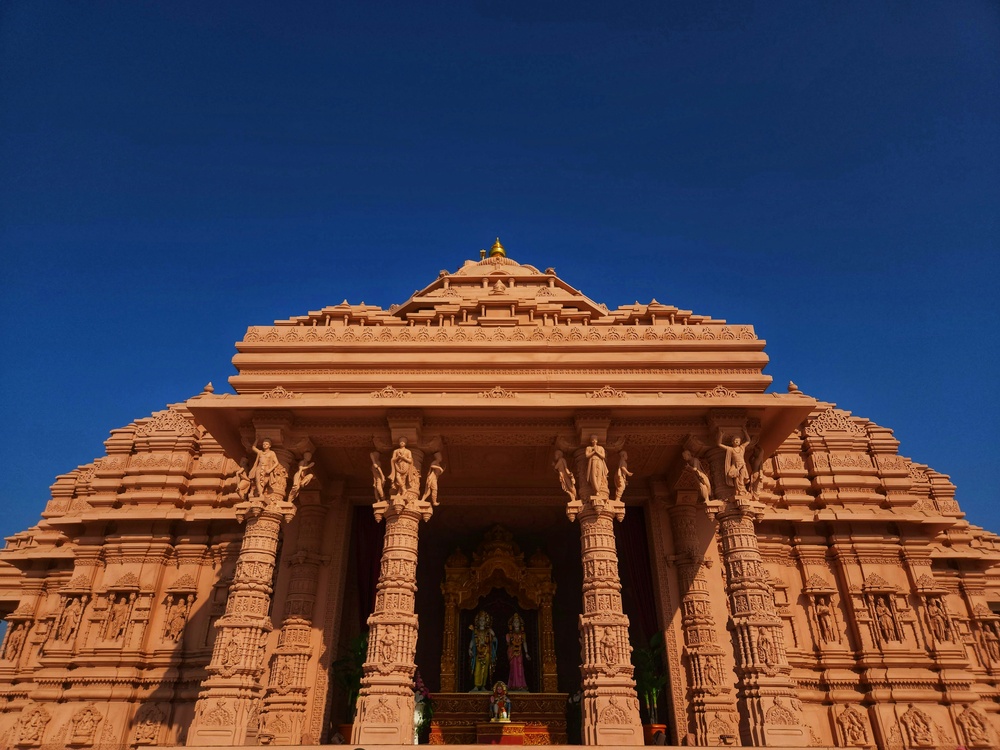Ayodhya Tourist Places That Blend Spirituality, Heritage, and Mythology
Ayodhya, one of the oldest and most revered cities in India, is where spirituality, heritage, and mythology converge in a mesmerizing harmony. Known as the birthplace of Lord Ram and an epicenter of the Ramayana, Ayodhya holds an irreplaceable position in Indian history and Hindu belief. Located on the banks of the holy Saryu River in Uttar Pradesh, Ayodhya attracts pilgrims, scholars, and curious travelers from across the globe.
This ancient city isn’t just about temples—it’s about timeless stories, rich traditions, sacred rituals, and cultural legacy. Let’s take a look at the top Ayodhya tourist places that beautifully blend devotion, history, and mythology into a soul-stirring journey.
1. Shri Ram Janmabhoomi Mandir
At the heart of Ayodhya lies the most significant spiritual and mythological site — Shri Ram Janmabhoomi Mandir. Believed to be the birthplace of Lord Ram, this temple is a symbol of faith for millions. With its awe-inspiring architecture and deep-rooted legacy, it is one of the most important Ayodhya tourist places.
Highlights: Grand temple structure, spiritual atmosphere, and mythological relevance.
2. Hanuman Garhi
A visit to Ayodhya is incomplete without seeking the blessings of Lord Hanuman at Hanuman Garhi. This hilltop temple, accessed by a flight of 76 steps, houses a shrine dedicated to the mighty monkey god. As per tradition, devotees visit Hanuman Garhi before heading to Ram Janmabhoomi.
Highlights: Mythological tales of Hanuman’s guardianship of Ayodhya, panoramic views, and spiritual energy.
3. Kanak Bhawan
Built in the 19th century, Kanak Bhawan is a stunning temple dedicated to Lord Ram and Goddess Sita. Said to be a wedding gift from Kaikeyi to Sita, this temple blends royal elegance with spiritual devotion. The richly decorated idols inside the sanctum are a visual delight.
Highlights: Vibrant architecture, Ram-Sita idols in royal attire, and peaceful ambiance.
4. Sita Ki Rasoi
Situated close to Ram Janmabhoomi, Sita Ki Rasoi is a symbolic kitchen shrine believed to have belonged to Goddess Sita. Though small in size, it holds immense cultural significance and gives visitors a glimpse into the domestic life of the Ramayana era.
Highlights: Mythological value, unique concept, and representation of divine household traditions.
5. Guptar Ghat
Guptar Ghat, located on the banks of the Saryu River, is where Lord Ram is believed to have taken jal samadhi (a divine immersion). This sacred ghat offers a serene space for meditation, prayer, and spiritual reflection. It also serves as the venue for the captivating Saryu Aarti every evening.
Highlights: Tranquil atmosphere, scenic river views, and spiritual significance.
6. Treta Ke Thakur
Treta Ke Thakur is an ancient temple built on the site where Lord Ram is believed to have performed the Ashwamedha Yajna. The temple features centuries-old black stone idols of Ram, Sita, Lakshman, Bharat, and Shatrughna. It’s only open to the public on specific festival days.
Highlights: Ancient idols, mythological rituals, and historic sanctity.
7. Nageshwarnath Temple
Unlike the other temples in Ayodhya that are dedicated to Lord Ram, Nageshwarnath Temple honors Lord Shiva. Believed to be built by Kush, the son of Lord Ram, this temple is a fine example of the city’s religious diversity and mythological depth.
Highlights: Shaivite devotion in a Vaishnavite city, mythic connection to Ram’s lineage.
8. Mani Parbat and Sugriv Parbat
These two small hillocks are associated with powerful Ramayana legends. Mani Parbat is believed to be a fragment of the Sanjeevani mountain carried by Hanuman, while Sugriv Parbat is linked to the monkey king Sugriv. They provide both spiritual importance and scenic views.
Highlights: Mythical connections, elevated city views, and offbeat exploration.
9. Tulsi Smarak Bhawan
This cultural hub is dedicated to the saint-poet Goswami Tulsidas, the author of Ramcharitmanas. The complex includes a museum, a library, and an auditorium where Ramayana-based plays and katha sessions are organized.
Highlights: Literary tribute to Tulsidas, cultural performances, and deep dive into devotional literature.
10. Ramkatha Park
A modern addition to Ayodhya’s spiritual landscape, Ramkatha Park is an open-air space for religious discourse, cultural events, and spiritual gatherings. It’s a peaceful place to rest, meditate, or enjoy performances that retell Ramayana stories.
Highlights: Cultural immersion, spiritual programs, and landscaped surroundings.
Conclusion
Ayodhya is not merely a city—it’s a living legend. It invites visitors to walk through sacred temples, bathe in spiritual ghats, climb mythological hills, and immerse themselves in tales that shaped Indian consciousness. The blend of Ayodhya tourist places offers a harmonious mix of devotion, heritage, and epic storytelling.
Whether you’re seeking divine blessings, cultural richness, or historical insight, Ayodhya has something to awaken every soul. As you explore this spiritual gem, you’ll realize that in Ayodhya, mythology isn’t a story from the past—it’s an experience that lives on in every stone, shrine, and river ripple.

